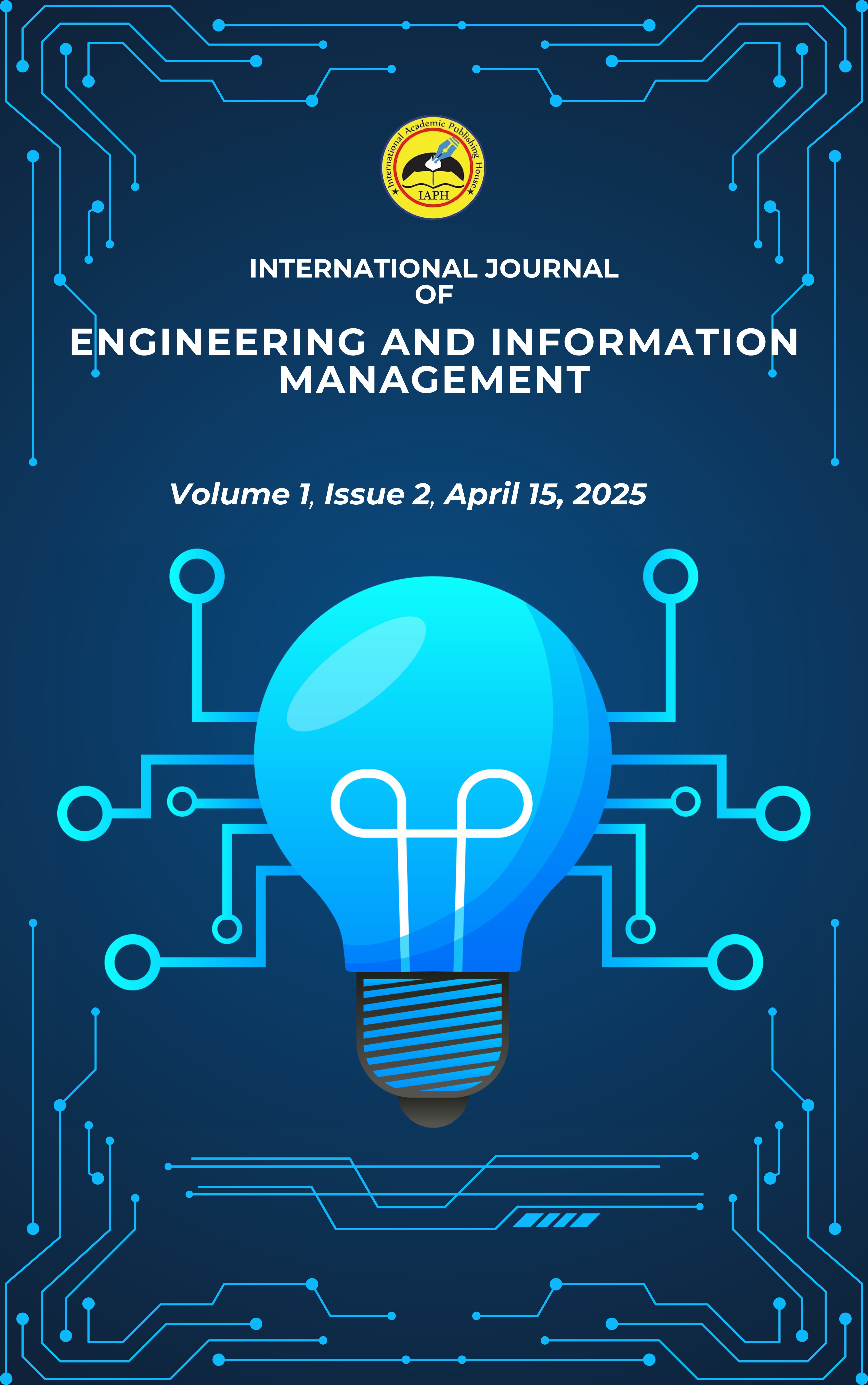Robust SCM Packaging Authentication through Aggregation-Based CSP Darknet53 with Integrated Spatial Pyramid Pooling
DOI:
https://doi.org/10.52756/ijeim.2025.v01.i02.005Keywords:
Darknet, DNN, Object Detection, Packaging Authentication, Spatial Pyramid PoolingAbstract
The Supply chain business model is being reshaped and transformed by artificial intelligence (AI) using contemporary, environmentally friendly AI-based techniques. Customers frequently receive the incorrect items in parcel boxes when they order online. Supply Chain (SC) companies uphold a simple return policy for clients, which incurs additional expenses for a specific order, to preserve their reputation. A certain amount of time is spent on the return procedure, which can result in losses for significant returns. By incorporating deep learning algorithms into the SC packaging process, the suggested method attempts to address this issue. Before the things are delivered, the darknet architecture in this document detects incorrect product delivery. Semantic properties are extracted from the video footage using the following framework. The suggested method is made with CSPDarknet53 to enhance learning capacity. The spatial pyramid pooling candidate window preserves 6×6 features as a connection parameter while providing special information processing to the various CNN layers. The DPM model is used for the encoding process. In the suggested information construction, a selective, optimistic search pattern path augmentation localized by RELU activation is used to choose features.
Downloads
References
Carrera, D. A., Mayorga, R. V., & Peng, W. (2020). A soft computing approach for group decision making: A supply chain management application. Applied Soft Computing, 91, 106201. https://doi.org/10.1016/j.asoc.2020.106201.
Cox, A. (1999). Power, value and supply chain management. Supply Chain Management an International Journal, 4(4), 167–175. https://doi.org/10.1108/13598549910284480.
Dolgui, A. & Ivanov, D. (2021). 5g in digital supply chain and operations management: fostering flexibility, end to-end connectivity and real-time visibility through internet-of-everything. International Journal of Production Research, 60 (2), 442–451. https://doi.org/10.1080/00207543.2021.2002969.
Dubey, R., Gunasekaran, A., Childe, S. J., Bryde, D. J., Giannakis, M., Foropon, C., Roubaud, D., & Hazen, B. T. (2019). Big data analytics and artificial intelligence pathway to operational performance under the effects of entrepreneurial orientation and environmental dynamism: A study of manufacturing organisations. International Journal of Production Economics, 226, 107599. https://doi.org/10.1016/j.ijpe.2019.107599.
Goodfellow, I. J., Warde-Farley, D., Mirza, M., Courville, A., & Bengio, Y. (2013). Maxout networks. arXiv preprint arXiv:1302.4389. https://doi.org/10.48550/arxiv.1302.4389.
He, K., Zhang, X., Ren, S., & Sun, J. (2015a). Deep residual learning for image recognition. arXiv preprint arXiv:1512.03385. https://doi.org/10.48550/arxiv.1512.03385.
He, K., Zhang, X., Ren, S., & Sun, J. (2015b). Spatial pyramid pooling in deep convolutional networks for visual recognition. IEEE Transactions on Pattern Analysis and Machine Intelligence, 37(9), 1904–1916.https://doi.org/10.1109/tpami.2015.2389824.
Howard, A. G. (2013). Some improvements on deep convolutional neural network based image classification. arXiv preprint arXiv:1312.5402. https://doi.org/10.48550/arxiv.1312.5402.
Howard, A. G., Zhu, M., Chen, B., Kalenichenko, D., Wang, W., Weyand, T., Andreetto, M., & Adam, H.(2017). Mobilenets: efficient convolutional neural networks for mobile vision applications. arXiv preprint arXiv:1704.04861. https://doi.org/10.48550/arxiv.1704.04861.
Huang, G., Liu, Z., Van Der Maaten, L., & Weinberger, K. Q. (2017). Densely connected convolutional networks.In Proceedings of the IEEE Conference on Computer Vision and Pattern Recognition (CVPR) (pp. 2261–2269).https://doi.org/10.1109/CVPR.2017.243.
Ioffe, S. & Szegedy, C. (2015). Batch normalization: Accelerating deep network training by reducing internal covariate shift. arXiv preprint arXiv:1502.03167. https://doi.org/10.48550/arxiv.1502.03167.
Jia, Y., Shelhamer, E., Donahue, J., Karayev, S., Long, J., Girshick, R., Guadarrama, S., & Darrell, T. (2014). Caffe: Convolutional architecture for fast feature embedding. arXiv preprint arXiv:1408.5093. https://doi.org/10.48550/arxiv.1408.5093.
Krizhevsky, A., Sutskever, I., & Hinton, G. E. (2012). Imagenet classification with deep convolutional neural networks. In Advances in Neural Information Processing Systems, volume 25 (pp. 1097–1105). https://doi.org/10.1145/3065386.
Lima-Junior, F. R. & Carpinetti, L. C. R. (2019). Predicting supply chain performance based on scor® metrics and multilayer perceptron neural networks. International Journal of Production Economics, 212, 19–38. https://doi.org/10.1016/j.ijpe.2019.02.001.
Mahrishi, M., Morwal, S., Muzaffar, A. W., Bhatia, S., Dadheech, P., & Rahmani, M. K. I. (2021). Video index point detection and extraction framework using custom yolov4 darknet object detection model. IEEE Access, 9, 143378–143391. https://doi.org/10.1109/access.2021.3118048.
Rota Bulò, S., Neuhold, G., & Kontschieder, P. (2017). In-place activated batchnorm for memory-optimized training of dnns. In Proceedings of the IEEE Conference on Computer Vision and Pattern Recognition (CVPR)(pp. 2126–2135). https://doi.org/10.48550/arXiv.1712.02616.
Simonyan, K. & Zisserman, A. (2014). Very deep convolutional networks for large-scale image recognition. arXiv preprint arXiv:1409.1556. https://doi.org/10.48550/arxiv.1409.1556.
Thompson, K. N. (1990). Vendor profile analysis. Journal of Purchasing and Materials Management, 26(1), 11–18. https://doi.org/10.1111/j.1745-493x.1990.tb00494.x.
Tieleman, T. & Hinton, G. (2012). Lecture 6.5-rmsprop: Divide the gradient by a running average of its recent magnitude. COURSERA: Neural Networks for Machine Learning. https://cir.nii.ac.jp/crid/1370017282431050757.
Wang, C., Liao, H. M., Yeh, I., Wu, Y., Chen, P., & Hsieh, J. (2019). Cspnet: A new backbone that can enhance learning capability of cnn. arXiv preprint arXiv:1911.11929. https://doi.org/10.48550/arxiv.1911.11929.
Wang, R. J., Li, X., & Ling, C. X. (2018). Pelee: a real-time object detection system on mobile devices. arXiv preprint arXiv:1804.06882. https://doi.org/10.48550/arxiv.1804.06882.
Yue, J., Mao, S., & Li, M. (2016). A deep learning framework for hyperspectral image classification using spatial pyramid pooling. Remote Sensing Letters, 7 (9), 875–884. https://doi.org/10.1080/2150704x.2016.1193793.
Zeiler, M. D., Taylor, G. W., & Fergus, R. (2011). Adaptive deconvolutional networks for mid and high level feature learning. In International Conference on Computer Vision (pp. 2018–2025). https://doi.org/10.1109/iccv.2011.6126474.
Zhang, Y., Jin, R., & Zhou, Z. (2010). Understanding bag-of-words model: a statistical framework. International Journal of Machine Learning and Cybernetics, 1(1–4), 43–52. https://doi.org/10.1007/s13042-010-0001-0.
Özkan, G. & İnal, M. (2014). Comparison of neural network application for fuzzy and anfis approaches for multi-criteria decision making problems. Applied Soft Computing, 24, 232–238. https://doi.org/10.1016/j.asoc.2014.06.032.
Downloads
Published
Issue
Section
License
Copyright (c) 2025 International Academic Publishing House (IAPH)

This work is licensed under a Creative Commons Attribution-NonCommercial-NoDerivatives 4.0 International License.




